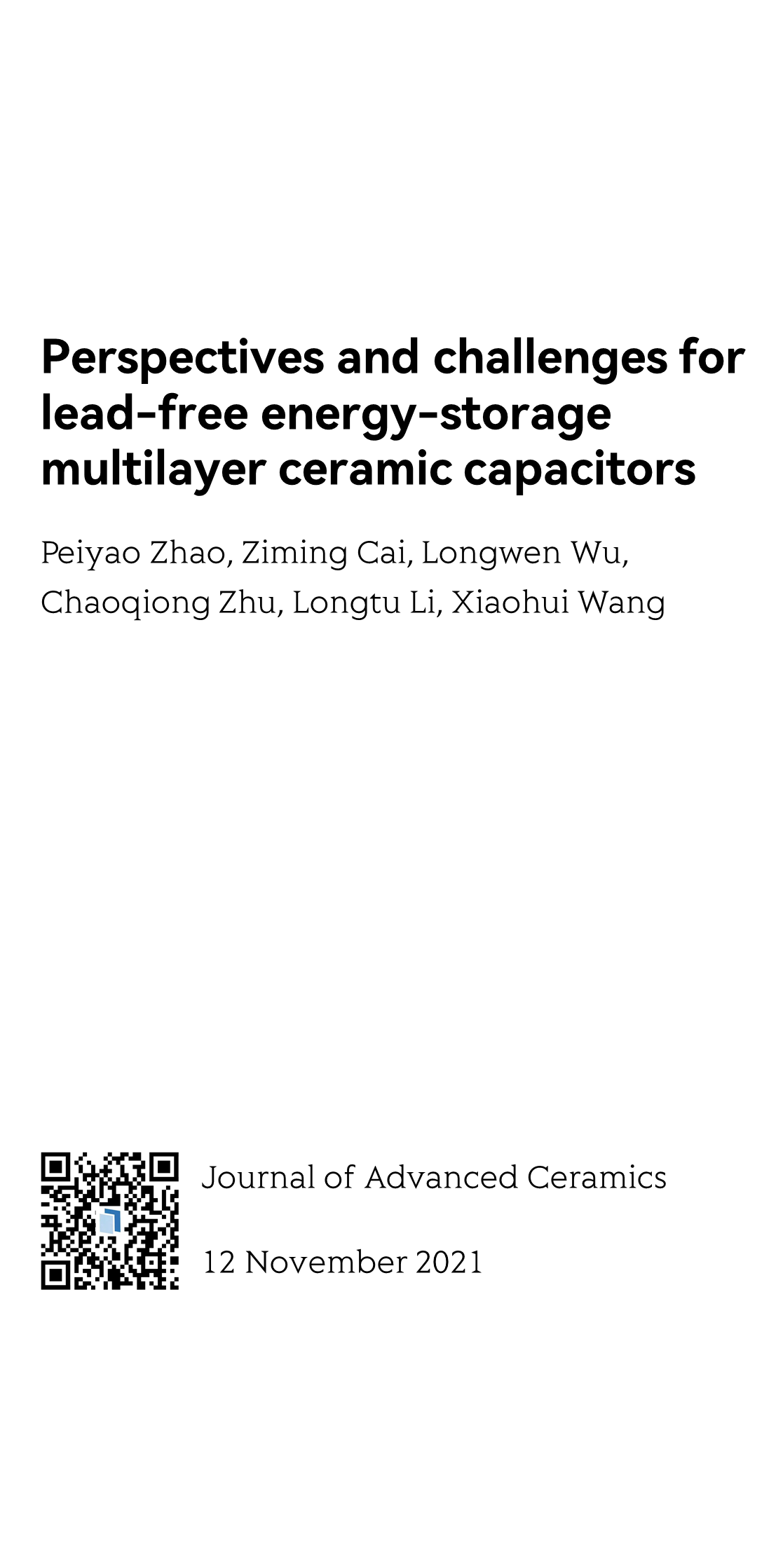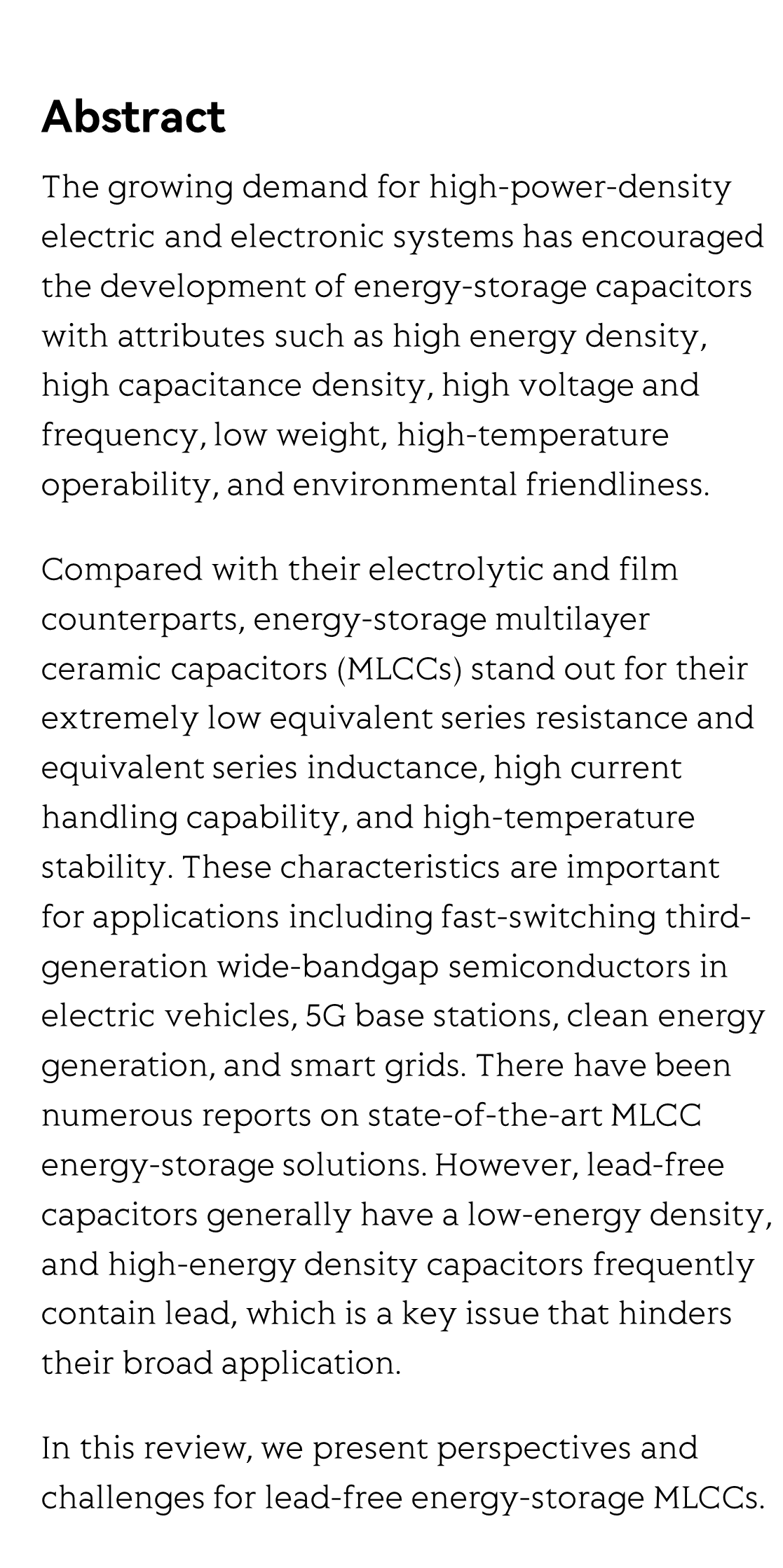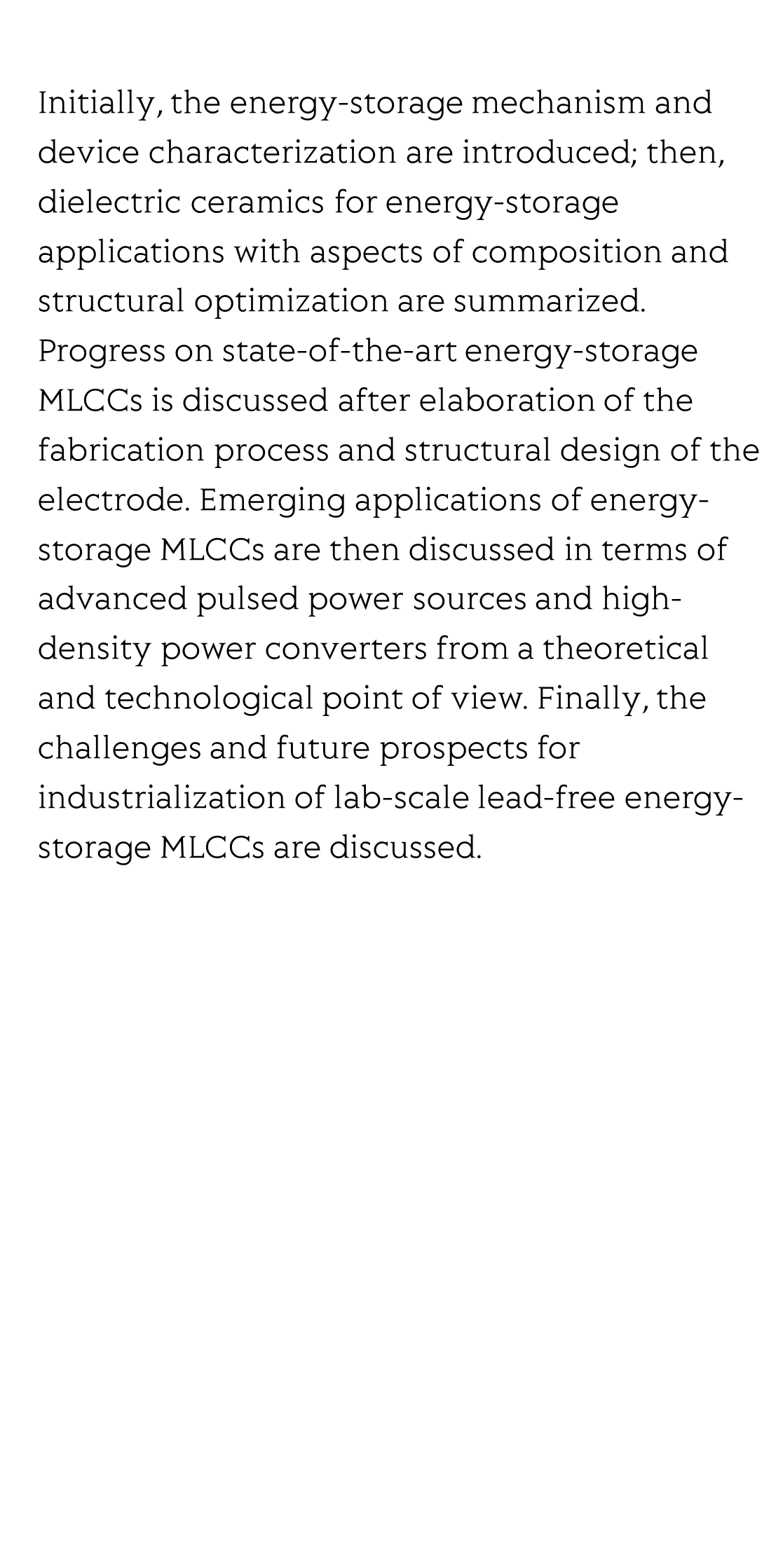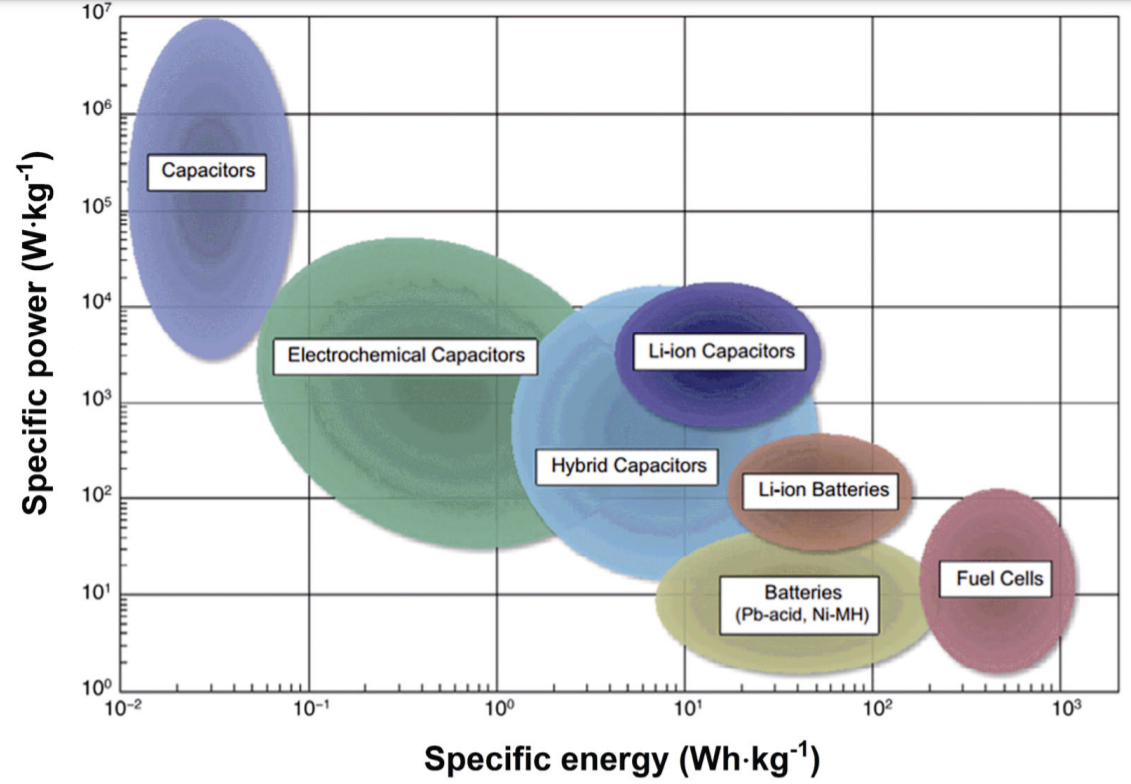(Peer-Reviewed) Perspectives and challenges for lead-free energy-storage multilayer ceramic capacitors
Peiyao Zhao 赵培尧 ¹, Ziming Cai 蔡子明 ², Longwen Wu 吴隆文 ³, Chaoqiong Zhu 朱超琼 ¹, Longtu Li 李龙土 ¹, Xiaohui Wang 王晓慧 ¹
¹ State Key Laboratory of New Ceramics and Fine Processing, School of Materials Science and Engineering, Tsinghua University, Beijing 100084, China
中国 北京 清华大学材料科学与工程研究院 新型陶瓷与精细工艺国家重点实验室
² School of Material Science and Physics, China University of Mining and Technology, Xuzhou 221116, China
中国 徐州 中国矿业大学 材料与物理学院
³ College of Electrical Engineering, Sichuan University, Chengdu 610065, China
中国 成都 四川大学 电气信息学院
Abstract
The growing demand for high-power-density electric and electronic systems has encouraged the development of energy-storage capacitors with attributes such as high energy density, high capacitance density, high voltage and frequency, low weight, high-temperature operability, and environmental friendliness.
Compared with their electrolytic and film counterparts, energy-storage multilayer ceramic capacitors (MLCCs) stand out for their extremely low equivalent series resistance and equivalent series inductance, high current handling capability, and high-temperature stability. These characteristics are important for applications including fast-switching third-generation wide-bandgap semiconductors in electric vehicles, 5G base stations, clean energy generation, and smart grids. There have been numerous reports on state-of-the-art MLCC energy-storage solutions. However, lead-free capacitors generally have a low-energy density, and high-energy density capacitors frequently contain lead, which is a key issue that hinders their broad application.
In this review, we present perspectives and challenges for lead-free energy-storage MLCCs. Initially, the energy-storage mechanism and device characterization are introduced; then, dielectric ceramics for energy-storage applications with aspects of composition and structural optimization are summarized. Progress on state-of-the-art energy-storage MLCCs is discussed after elaboration of the fabrication process and structural design of the electrode. Emerging applications of energy-storage MLCCs are then discussed in terms of advanced pulsed power sources and high-density power converters from a theoretical and technological point of view. Finally, the challenges and future prospects for industrialization of lab-scale lead-free energy-storage MLCCs are discussed.
Flicker minimization in power-saving displays enabled by measurement of difference in flexoelectric coefficients and displacement-current in positive dielectric anisotropy liquid crystals
Junho Jung, HaYoung Jung, GyuRi Choi, HanByeol Park, Sun-Mi Park, Ki-Sun Kwon, Heui-Seok Jin, Dong-Jin Lee, Hoon Jeong, JeongKi Park, Byeong Koo Kim, Seung Hee Lee, MinSu Kim
Opto-Electronic Advances
2025-09-25
Dual-frequency angular-multiplexed fringe projection profilometry with deep learning: breaking hardware limits for ultra-high-speed 3D imaging
Wenwu Chen, Yifan Liu, Shijie Feng, Wei Yin, Jiaming Qian, Yixuan Li, Hang Zhang, Maciej Trusiak, Malgorzata Kujawinska, Qian Chen, Chao Zuo
Opto-Electronic Advances
2025-09-25







